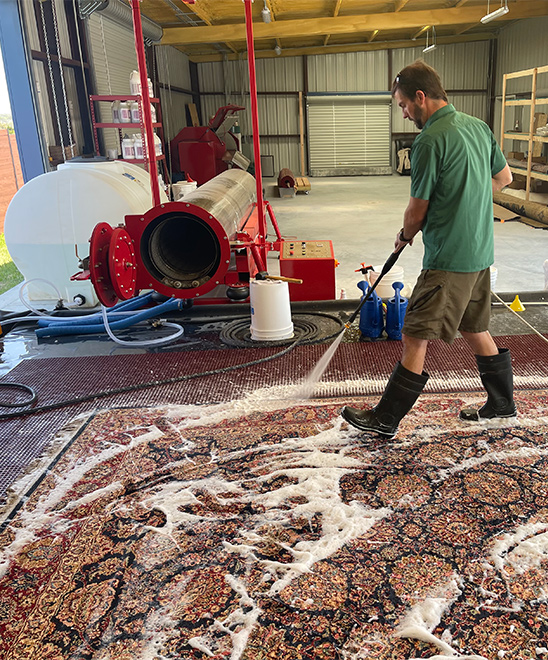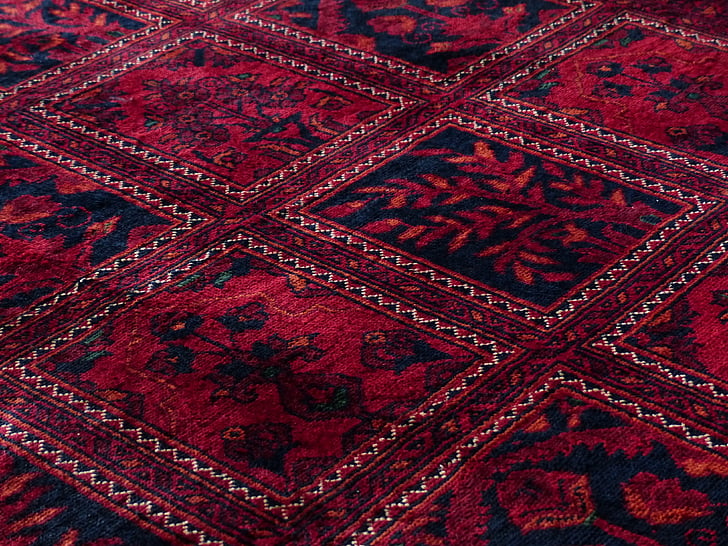
DIY Rug Cleaning Tips: Make It Look Like New Again
Are your rugs looking dull and worn out? Are stains and dirt making them lose their beautiful luster? Look no further! In this article, we will share some DIY rug cleaning tips that will make your rugs look like new again. Whether you have an expensive Oriental rug, a cozy shag carpet, or a simple area rug, these tips will help you restore their original beauty without breaking the bank.
We understand that cleaning your own rugs can be a daunting task, especially if you have never done it before. But with our easy-to-follow techniques and simple ingredients you probably already have at home, you can tackle those stubborn stains and dirt with confidence. From removing pet hair to deodorizing, we’ve got you covered.
So, roll up your sleeves and get ready to give your rugs the attention they deserve. With our DIY rug cleaning tips, you’ll be amazed at how vibrant and fresh your rugs can look again. Say goodbye to dingy and hello to clean and refreshed rugs!
Why is Rug Cleaning Important?
Rugs play a vital role in enhancing the aesthetics of our homes. They add warmth, comfort, and style to any space. However, over time, rugs accumulate dirt, dust, pet dander, and stains, which can make them look dull and worn out. Regular rug cleaning is essential not only for maintaining their appearance but also for improving indoor air quality and prolonging their lifespan.
When rugs are not properly cleaned, dirt and debris settle deep into the fibers, causing them to break down over time. Additionally, stains can become permanent if left unattended, making it more challenging to restore the rug’s original beauty. By incorporating regular rug cleaning into your home maintenance routine, you can ensure that your rugs stay fresh, vibrant, and free from allergens.
Common Rug Cleaning Mistakes to Avoid
Before we dive into the DIY rug cleaning methods, it’s crucial to be aware of common mistakes that should be avoided. These mistakes can unintentionally damage your rugs and make the cleaning process more challenging. Here are a few key mistakes to keep in mind:
1. Using excessive water: Over-wetting your rug can lead to mold growth and damage the backing. It’s important to use the right amount of water during the cleaning process to prevent such issues.
2. Scrubbing vigorously: Scrubbing your rug aggressively can cause the fibers to fray or become distorted. Instead, opt for gentle and circular motions when cleaning.
3. Using harsh chemicals: Harsh chemicals can strip away the color and damage the fibers of your rug. It’s best to use mild and eco-friendly cleaning solutions to protect the rug’s integrity.
4. Neglecting regular vacuuming: Regular vacuuming is crucial for keeping your rugs clean and free from dirt and debris. Neglecting this step can make the deep cleaning process more challenging and less effective.
By avoiding these common mistakes, you can ensure that your DIY rug cleaning efforts yield the best results without causing any damage to your precious rugs.
Different Types of Rugs and Their Cleaning Requirements
Before diving into the DIY rug cleaning methods, it’s important to understand that different types of rugs have varying cleaning requirements. Each rug material requires specific cleaning techniques to prevent damage and maintain its quality. Let’s take a look at some common rug types and their cleaning needs:
- Wool Rugs: Wool rugs are known for their durability and luxurious feel. When cleaning wool rugs, it’s essential to avoid excessive moisture and high heat, as they can shrink or distort the fibers. Gentle cleaning techniques, such as dry cleaning or low-moisture cleaning, are recommended for wool rugs.
- Synthetic Rugs: Synthetic rugs, such as nylon or polyester, are more resistant to stains and moisture compared to natural fiber rugs. They can be safely cleaned using water-based cleaning solutions. However, it’s important to always check the manufacturer’s instructions before attempting any cleaning method.
- Natural Fiber Rugs: Natural fiber rugs, like jute or sisal, are delicate and require special care. They should be vacuumed regularly and gently spot cleaned using mild cleaning solutions. It’s important to avoid excessive moisture, as it can weaken the fibers and cause them to break.
Understanding the specific needs of your rug material will help you choose the appropriate DIY cleaning method and avoid any potential damage. Now, let’s dive into the step-by-step guide for deep cleaning your rugs at home.
DIY Rug Cleaning Methods for Different Materials
Cleaning your rugs at home doesn’t have to be complicated or expensive. With the right techniques and ingredients, you can achieve professional-level results. Here are some DIY rug cleaning methods for different materials:
Wool Rugs
Wool rugs require extra care to maintain their softness and appearance. Here’s a step-by-step guide to deep clean your wool rug at home:
- Prepare the rug: Start by removing loose dirt and debris from the rug by vacuuming it thoroughly. Make sure to use a vacuum cleaner with a brush attachment to prevent any damage to the fibers.
- Spot clean stains: If you notice any stains on your wool rug, it’s important to address them before proceeding with the deep cleaning. Use a mixture of mild detergent and water to gently blot the stain. Avoid rubbing the stain, as it can push it deeper into the fibers.
- Choose a cleaning solution: For deep cleaning, you can either use a commercial wool rug cleaner or make your own solution using mild detergent and lukewarm water. Avoid using hot water, as it can shrink the rug.
- Test the solution: Before applying the cleaning solution to the entire rug, it’s important to test it on a small, inconspicuous area. This will help you ensure that the solution doesn’t cause any color bleeding or damage to the rug.
- Clean the rug: Once you have tested the cleaning solution, you can proceed to clean the entire rug. Apply the solution using a soft brush or sponge, working in a circular motion. Be gentle to avoid damaging the fibers. Rinse the rug thoroughly with lukewarm water to remove any residue.
- Remove excess moisture: After cleaning, remove excess moisture from the rug by blotting it with clean towels or using a wet-dry vacuum. Avoid wringing or twisting the rug, as it can damage the fibers.
- Dry the rug: Lay the rug flat on a clean and dry surface, away from direct sunlight or heat sources. Allow it to air dry completely before placing it back in its original location. This may take several hours or even days, depending on the size and thickness of the rug.
By following these steps, you can effectively deep clean your wool rug at home and restore its beauty without causing any damage.
Synthetic Rugs
Synthetic rugs are relatively easier to clean compared to other materials. Here’s a step-by-step guide to deep clean your synthetic rug at home:
- Vacuum the rug: Start by vacuuming the rug thoroughly to remove any loose dirt and debris. Use a vacuum cleaner with a brush attachment for best results. This will help prepare the rug for deep cleaning.
- Spot clean stains: If there are any stains on the synthetic rug, treat them before proceeding with the deep cleaning process. Use a mixture of mild detergent and water to gently blot the stain. Avoid scrubbing, as it can damage the fibers.
- Choose a cleaning solution: For deep cleaning, you can use a mixture of mild detergent and warm water. Alternatively, you can also opt for a commercial synthetic rug cleaner. Follow the manufacturer’s instructions if using a commercial cleaner.
- Apply the cleaning solution: Dip a soft brush or sponge into the cleaning solution and gently scrub the rug in a circular motion. Be careful not to apply excessive pressure, as it can cause the fibers to fray. Pay extra attention to high-traffic areas and stains.
- Rinse the rug: After scrubbing, rinse the rug thoroughly with clean water to remove any residue. You can either use a hose or a clean sponge soaked in water. Make sure to remove all traces of the cleaning solution.
- Remove excess moisture: To remove excess moisture from the rug, use a wet-dry vacuum or blot it with clean towels. Avoid wringing or twisting the rug, as it can damage the fibers.
- Dry the rug: Lay the rug flat on a clean and dry surface, preferably in a well-ventilated area. Allow it to air dry completely before placing it back in its original location. Avoid direct sunlight or heat sources, as they can cause the rug to fade or shrink.
By following these steps, you can effectively deep clean your synthetic rug at home and restore its vibrancy.
Natural Fiber Rugs
Natural fiber rugs require gentle cleaning methods to protect their delicate fibers. Here’s a step-by-step guide to deep clean your natural fiber rug:
- Vacuum the rug: Begin by vacuuming the rug thoroughly to remove loose dirt and debris. Use a vacuum cleaner with a brush attachment to prevent any damage to the fibers. This will help prepare the rug for deep cleaning.
- Spot clean stains: If there are any stains on the natural fiber rug, address them before proceeding with the deep cleaning process. Use a mixture of mild detergent and water to gently blot the stain. Avoid rubbing, as it can cause the fibers to break.
- Choose a cleaning solution: For deep cleaning natural fiber rugs, it’s best to use a mild and natural cleaning solution. You can mix equal parts of white vinegar and water or use a gentle carpet cleaner specifically formulated for natural fiber rugs.
- Test the solution: Before applying the cleaning solution to the entire rug, it’s important to test it on a small, inconspicuous area. This will help you ensure that the solution doesn’t cause any color bleeding or damage to the rug.
- Clean the rug: Once you have tested the cleaning solution, you can proceed to clean the entire rug. Apply the solution using a soft brush or sponge, working in a circular motion. Be gentle to avoid damaging the fibers. Rinse the rug thoroughly with clean water to remove any residue.
- Remove excess moisture: After cleaning, remove excess moisture from the rug by blotting it with clean towels or using a wet-dry vacuum. Avoid wringing or twisting the rug, as it can damage the fibers.
- Dry the rug: Lay the rug flat on a clean and dry surface, away from direct sunlight or heat sources. Allow it to air dry completely before placing it back in its original location. This may take longer compared to other rug materials, so be patient.
By following these steps, you can effectively deep clean your natural fiber rug at home and maintain its beauty.
Tips for Removing Common Rug Stains
Stains are an inevitable part of owning rugs, especially in high-traffic areas or homes with pets and children. However, with the right techniques and ingredients, you can effectively remove common rug stains. Here are some tips for removing specific stains:
Wine Stains
- Wine spills can leave unsightly stains on your rugs. To remove wine stains:
- Blot the stain immediately using a clean cloth or paper towel to absorb as much wine as possible.
- Mix a solution of equal parts dishwashing liquid and hydrogen peroxide.
- Apply the solution to the stained area and gently blot it with a clean cloth.
- Rinse the area with clean water and blot dry.
Pet Urine Stains
Pet urine stains can be challenging to remove, but with the right approach, you can eliminate both the stain and the odor. Here’s what you can do:
- Blot the urine stain with a clean cloth or paper towel to remove as much liquid as possible.
- Mix a solution of equal parts white vinegar and water.
- Apply the solution to the stained area and let it sit for a few minutes.
- Blot the area with a clean cloth to absorb the solution.
- Sprinkle baking soda over the stain and let it sit for a few hours to absorb any remaining odor.
- Vacuum the area thoroughly to remove the baking soda.
7. Coffee Stains
- Coffee spills can leave brown stains on your rugs. To remove coffee stains:
- Blot the stain immediately using a clean cloth or paper towel to absorb as much liquid as possible.
- Mix a solution of mild detergent and warm water.
- Apply the solution to the stained area and gently blot it with a clean cloth.
- Rinse the area with clean water and blot dry.
By following these tips, you can effectively remove common rug stains and restore the beauty of your rugs.
Using Natural Ingredients for Eco-Friendly Rug Cleaning
If you prefer to use natural ingredients for rug cleaning, there are several options available. Here are a few eco-friendly ingredients and their uses:
- White Vinegar: White vinegar is a versatile cleaning agent that can remove stains and neutralize odors. It can be used for spot cleaning or added to a cleaning solution for deep cleaning.
- Baking Soda: Baking soda is excellent for absorbing odors. Sprinkling baking soda on your rugs before vacuuming can help eliminate unpleasant smells.
- Lemon Juice: Lemon juice is a natural bleaching agent and can be used to lighten stains on light-colored rugs. Mix lemon juice with water, apply it to the stain, and blot gently.
- Salt: Salt can be used to absorb fresh spills and prevent them from setting into the rug fibers. Sprinkle salt on the spill, let it sit for a few minutes, and then vacuum it up.
By using these natural ingredients, you can effectively clean your rugs while minimizing your environmental impact.


